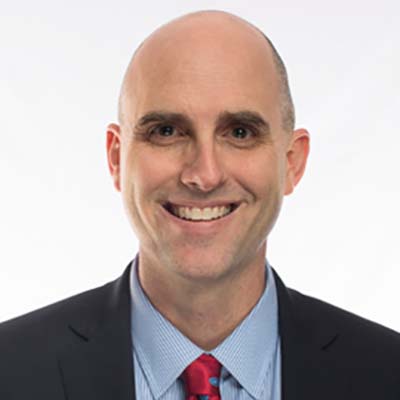If the pandemic has made one thing clear, it’s that we need to shift acute care delivery from the hospital to the community. For clinicians, this may require some mental gymnastics. For as long as most of us have been working in medicine, hospital-based clinicians defined ourselves by practice location. Even the names of our professions (ED physician, hospitalist) reflect this narrow geographic focus. In other words, we limit our impact to a piece of earth little bigger than a football field.
And despite the pandemic surging around us, most hospitals and emergency departments (EDs) continue to treat patients face-to-face. This is ironic given that virtual care could solve some of acute care’s toughest challenges — from access and costs to ED crowding. In this piece, I share how telehealth expansion is leading to a role redefinition for emergency physicians and hospitalists.
To succeed in a post-pandemic world, we need to expand our expertise beyond the four walls of the hospital. We need to shoulder the responsibility of stepping out into our communities, meeting patients where they are, and bringing them the care they need.
Expanding Acute Care Identities for Clinicians
The shift toward patient-centered care starts in our hearts and minds. Emergency department physicians must step into the expanded role of “emergency physician.” Likewise, hospitalists must embrace the more inclusive idea of being “acute care physicians.”
One example of this new paradigm in action is the hospital-at-home model. To expand inpatient capacity during the pandemic, hospitalists are delivering an inpatient level of care to patients in the community. By extending into homes and skilled nursing facilities, they are providing superior care continuity while challenging the traditional view that acute care happens only in hospitals.
While hospital-at-home is a promising step, it’s imperative that hospitals accelerate virtual care adoption and close the widening gap with their outpatient colleagues. Many primary care clinicians are quite comfortable with virtual care and have invested in telehealth infrastructure, while hospital-based clinicians are still only familiar with in-person patient assessments. One concern is that patients who prefer telehealth will seek it from their primary care provider when they really need to be talking to an acute care physician. After all, who knows better than an emergency physician whether or not a patient should come to the hospital? And who is better positioned than a hospitalist to notice signs of deterioration in a newly discharged patient?
It's not fair to overburden primary care physicians just because they have stronger telehealth infrastructure. A better approach would be for traditionally hospital-based physicians to engage with these patients before they arrive at the hospital and after they leave. Our long-term goal is always to connect patients with primary care for better disease prevention and management. However, acute care physicians can greatly improve care continuity by virtually managing their discharged patients in the crucial first days and weeks after they leave the hospital. In addition to relieving the burden on primary care, this approach could also greatly reduce hospital readmissions and ED “bounce backs.”
Healthcare Innovation Means Hospitals Must Also Evolve
While floor plans and structures may change in coming years, hospitals aren’t going anywhere. However, as health systems deliver more services in the community, inpatient care will be limited to the most acute and resource-intensive cases. This means that the average admitted patients in 2021 will look very different from those in 2015. In a word, they will be sicker.
“The sooner health systems begin adapting to this new reality, the more resilient they will be in a rapidly shifting healthcare landscape.”
Gregg Miller, MD
Chief Medical Officer
How can hospitals prepare? For one, they will likely need to increase staffing ratios. This highly acute population may require more intensive nursing care. Clinicians will spend additional time at the bedside and then afterward documenting more complex encounters. In addition, this population will demand more patient education as well as assistance with social supports like food, shelter, and transportation. Hospitals that rely on staffing benchmarks from a bygone era could quickly find their teams overwhelmed.
In the past, acute care clinicians could rely on having a few “easy” patients on every shift. Spending just half an hour on a simple case freed them to spend two hours on a more complex one. But as our patient population grows more acute, these opportunities will disappear. This is yet another way that staffing to an old reality might fuel the fires of burnout and frustration. It’s therefore imperative that hospitals start planning for the future before it’s thrust upon them. For more insights on the future of hospital medicine, check out this article by my colleague, Joshua Niebruegge, MD.
What Will We Achieve with Telehealth in 2021?
2021 could be a watershed year for virtual acute care. While I don’t have a crystal ball, experience suggests we’re moving toward implementation for virtual front door and ED triage models. These could help greatly increase hospitals’ ability to absorb COVID-19 and flu surges one winter from now. At the same time, programs like hospital at home and telefollow-up could greatly expand inpatient capacity
Telehealth has been successful in the primary care environment, but it needs to expand further into the acute care space. Acute care will accelerate its shift outside physical locations like hospitals, emergency departments, and medical pavilions. The sooner health systems begin adapting to this new reality, the more resilient they will be in a rapidly shifting healthcare landscape. It’s important to realize that there will be no return to normality, and that our post-COVID world will be a different ballgame. And as any good coach knows, it’s never too early to start preparing the players (and the fans) for change.
Vituity CEO Imamu Tomlinson was recognized by Modern Healthcare as One of 50 Most Influential Clinical Executives for expanding Vituity’s scope of care delivery via virtual care models.
Read more.























